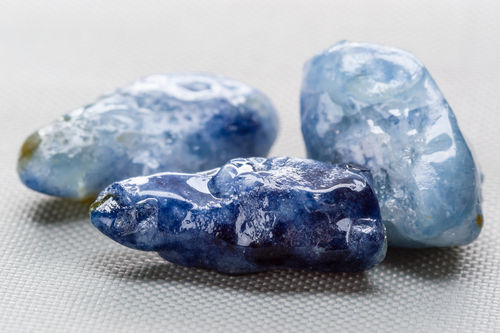Table of Contents
Introduction
Diamonds and sapphires are two of the most popular gemstones in the world, each possessing unique qualities that make them highly coveted. In this article, we’ll delve into the differences between diamonds and sapphires, exploring their characteristics, value, uses, and much more.
1. Formation and Composition
1.1 Diamonds
1.2 Sapphires
Diamonds are formed deep within the Earth’s mantle under extreme pressure and heat, while sapphires are created through a process called crystallization from minerals containing aluminum and oxygen.
2. Physical Properties
Diamonds, known for their exceptional hardness, rank as a 10 on the Mohs scale, making them the hardest natural substance. They come in various colors but are most commonly associated with white or colorless hues. Clarity refers to the presence of flaws or inclusions within the diamond, affecting its overall brilliance.
Sapphires, while also durable, register a 9 on the Mohs scale, making them slightly less hard than diamonds. They are renowned for their rich blue color, but they can also occur in shades of pink, yellow, green, and more. Clarity in sapphires is also essential, with fewer inclusions leading to a more valuable stone.
3. Rarity and Value
3.1 Diamonds
3.2 Sapphires
Diamonds have historically been prized for their rarity, with natural, high-quality diamonds fetching exorbitant prices in the market. However, the diamond industry has faced controversies regarding artificial scarcity and ethical concerns surrounding mining practices.
Sapphires, though not as rare as diamonds, still command significant value, particularly for those of exceptional quality and color. The scarcity of certain colors, such as the highly sought-after Kashmir blue sapphire, drives up their worth.
4. Uses and Symbolism
4.1 Diamonds
4.2 Sapphires
Diamonds have long been associated with romance and commitment, diamonds vs sapphires, symbolizing eternal love in engagement rings and wedding bands. Beyond jewelry, diamonds also have industrial applications due to their hardness, used in cutting tools, drill bits, and even in scientific research.
Sapphires, too, hold symbolic significance, representing wisdom, virtue, and good fortune. They are commonly found in various types of jewelry, including earrings, necklaces, and bracelets, and are also used in watchmaking for their durability and beauty.
5. Cultural Significance
5.1 Diamonds
5.2 Sapphires
Diamonds have been deeply ingrained in popular culture, perpetuated by marketing campaigns and iconic moments in history. The phrase “diamonds are forever” epitomizes the enduring allure and symbolism associated with these precious gems.
Sapphires, while not as ubiquitous in popular culture as diamonds, have their own share of significance, often associated with royalty and nobility throughout history. They have been featured in royal crowns, regal jewelry, and even in religious artifacts.
6. Maintenance and Care
6.1 Diamonds
6.2 Sapphires
Both diamonds and sapphires require regular cleaning and maintenance to preserve their brilliance and luster. While diamonds are relatively easy to clean with mild soap and water, sapphires may require more delicate handling, especially if they have undergone treatments such as heat or fracture filling.
7. Investment Potential
7.1 Diamonds
7.2 Sapphires
Diamonds, particularly those of high quality and rarity, have traditionally been seen as a stable investment, with prices often appreciating over time. However, fluctuations in the diamond market and the emergence of laboratory-grown diamonds have introduced uncertainties.
Sapphires also hold investment potential, especially for collectors seeking rare and valuable specimens. As with diamonds, factors such as color, clarity, and origin significantly influence the value and investment appeal of sapphires.
8. Ethical Considerations
8.1 Diamonds
8.2 Sapphires
In recent years, ethical concerns surrounding the lab diamonds industry have prompted consumers to seek out ethically sourced and conflict-free diamonds. Initiatives such as the Kimberley Process aim to regulate the trade of rough diamonds and prevent the sale of stones used to finance conflicts.
Similarly, the sapphire industry faces challenges related to ethical sourcing and environmental impact. Consumers increasingly prioritize transparency and sustainability, driving demand for responsibly mined and traceable sapphires.
Conclusion
In conclusion, while diamonds and sapphires are distinct gemstones with their own unique qualities and characteristics, they share a timeless appeal and enduring beauty that continues to captivate enthusiasts and collectors alike. Whether you prefer the brilliance of a diamond or the allure of a sapphire, both gemstones hold a special place in the world of jewelry and beyond.

